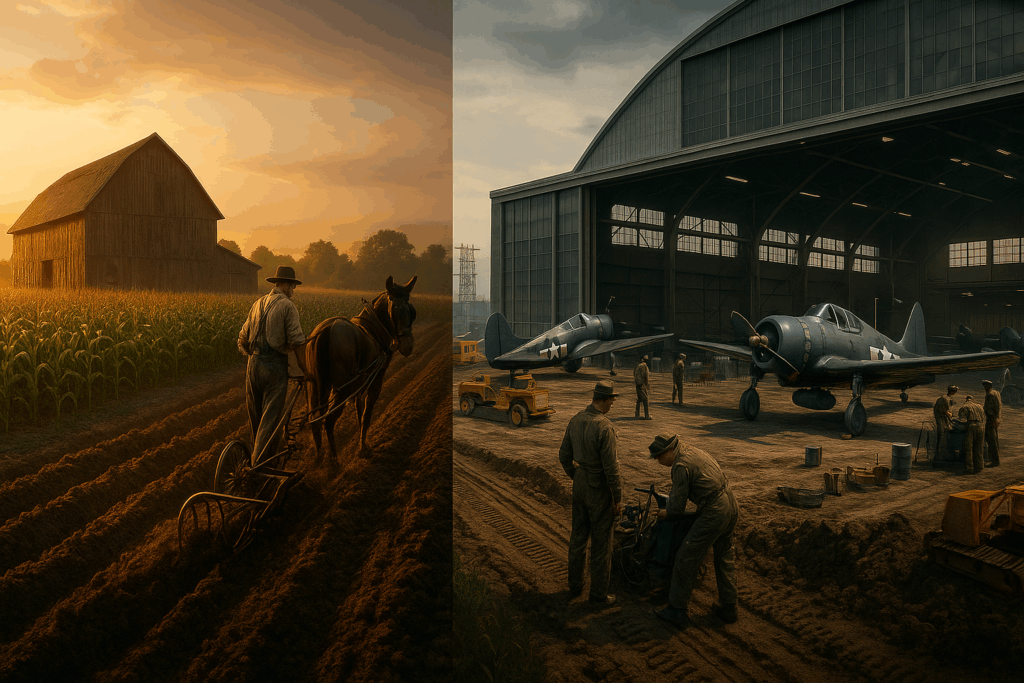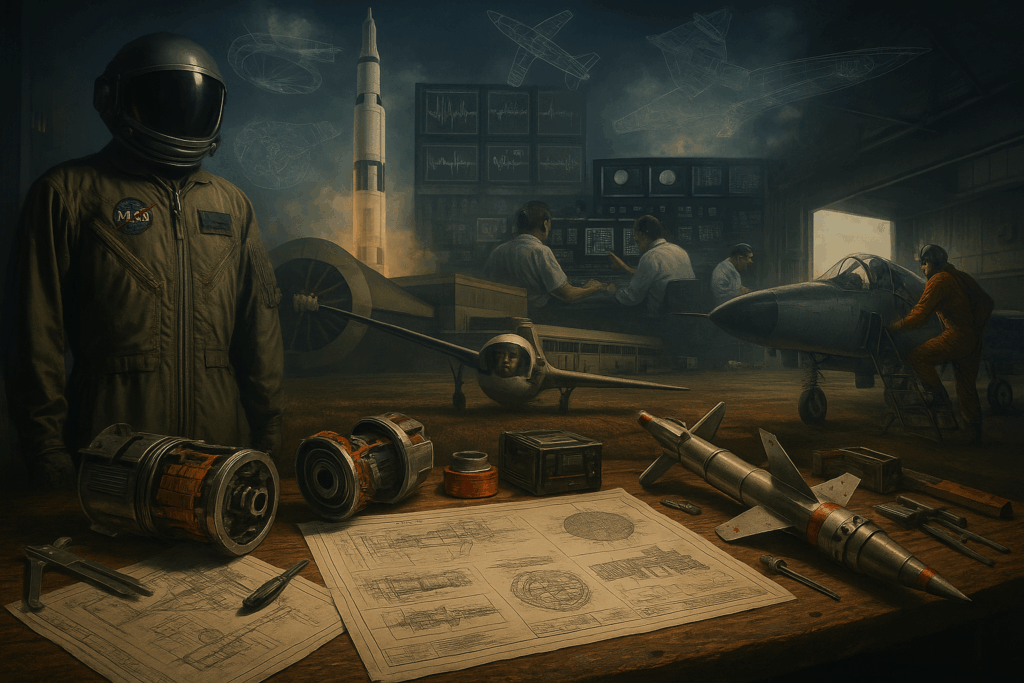It Started With Corn. It Ended With the Moon.
In the early 20th century, the land that would later host America’s most advanced aerospace research wasn’t full of jets, rockets, or spinning centrifuges. It was full of corn.
Rows and rows of it.
But beneath those furrows of farmland was a spark—a quiet legacy of invention that had been building in Bucks County for centuries. By the 1940s, that land was no longer for planting. It was for launching the future.
This is the story of how a farm became a flight lab… and how a town became a launchpad.
The Agrarian Roots of American Innovation
Before it ever saw jet engines, Warminster saw plows and patents:
-
John Fitch: Built America’s first successful steamboat just miles away, in 1787.
-
Robert Beans: Patented a mechanized harvester in 1855 and opened an agricultural implement factory in Johnsville.
-
Lettie A. Smith: Invented an award-winning chilled butter-worker in nearby Newtown in 1853.
-
Smith Brothers: Developed a cast-iron plow in 1800 that revolutionized soil tilling in Pennsylvania.
These weren’t just curiosities. They were signs of a region that thought in machines—that saw every problem as an opportunity to engineer a better answer.
Enter James Work—and the Rise of Brewster Aeronautical
In the 1930s, local Navy veteran and agricultural engineer James Work envisioned something bolder: an aircraft manufacturing plant built on Bucks County farmland. He founded the Brewster Aeronautical Corporation, which would go on to produce:
-
The F2A Buffalo fighter
-
The Brewster Buccaneer dive bomber
-
Components for Allied air forces in WWII
Though plagued by scandal, strikes, and wartime politics, Brewster’s collapse became an opportunity.
The Navy Moves In: Birth of the NADC
After Brewster folded, the U.S. Navy took over the site in 1944 and transformed it into the Naval Air Development Center (NADC). What had once been barns and barns became:
-
Wind tunnels
-
Electronics labs
-
Missile test ranges
-
The world’s largest human centrifuge
Soon, the same land that once grew food was growing something even more vital: flight safety technology, astronaut training protocols, and aerospace medicine.
“From cornfields to cockpit simulators, Warminster became a hidden engine of Cold War innovation.”
— Franz Bohn, BRAC Coordinator, NADC Legacy Committee
What They Built in Bucks County Changed Space History
Here’s just a glimpse of what NADC and its partners created:
-
Fire-resistant NOMEX flight suits
-
High-G pilot training systems
-
Satellite communication and telemetry devices
-
Flight data recorders
-
Early guided missile prototypes
-
Simulation tech for X-15, F-18, and Apollo missions
They weren’t building things for today. They were preparing us for space.
Key Takeaways
-
Bucks County was a seedbed of invention long before aviation arrived.
-
James Work’s bold vision created a local aircraft factory that attracted Navy attention.
-
The U.S. Navy transformed farmland into the Naval Air Development Center—a Cold War aerospace hub.
-
Warminster contributed to flight safety, space medicine, and astronaut training.
-
The site’s legacy lives on—even if many don’t know its name.
The Hidden Town That Helped Launch a Nation
In our documentary Before The Moon, we trace this unlikely path—from corn to cockpit, from invention to ignition.
It’s a story that reminds us: you don’t have to be in Houston to make space history. Sometimes, you just have to look out your back door in Pennsylvania.
✅ Want to learn more?
Visit BeforeTheMoonFilm.com
Follow us on Instagram
Or better yet—come visit The Fuge and walk the ground where astronauts once trained.




Leave a Reply